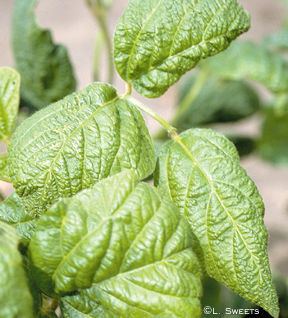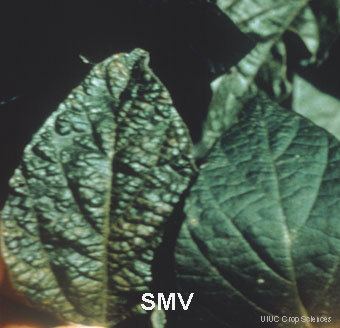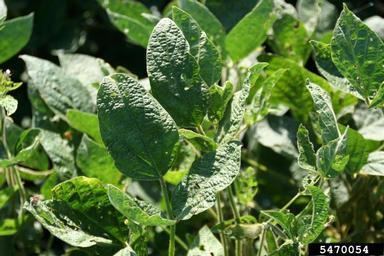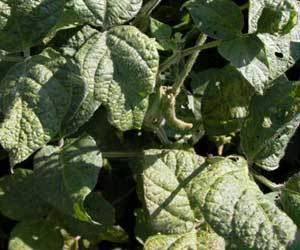Group Group IV ((+)ssRNA) Rank Species | Order Unassigned | |
 | ||
Scientific name Potyvirus soybean mosaic virus Similar Bean pod mottle virus, Potyvirus, Bean yellow mosaic vi, Soybean aphid, Potyviridae | ||
Soybean mosaic virus (SMV) is a pathogenic plant virus of the family Potyviridae. Informally the virus is sometimes referred to as Crinkle.
Contents

Symptoms

Soybean mosaic virus (SMV) causes stunted growth and crinkled leaves. Infected plants range from no symptoms to severely mottled and deformed. Leaf blades are often narrow and/or spindly with dark green swollen veins. Plants are often stunted, with petioles and internodes being usually shortened. Infected seed pods are often smaller, curled, and have less hair.

Soybean mosaic can also reduce seed size and pod number per plant, and soybean mosaic is one of several factors associated with discoloration of seeds, causing a dark discolored tear stain origination at the hilum. The virus can interact with bean pod mottle virus (BPMV) to create severe symptoms in plants infected with both viruses. Symptoms can be difficult to see when temperatures are above 90 °F. SMV can sometimes be confused with herbicide damage. Looking for a consistent pattern along a field's edge, an unlikely pattern for a SMV infection, can help differentiate the disease from herbicide damage.
Pathogen vectors

Soybean mosaic virus (SMV) can be transmitted by several vectors. SMV can be transmitted by aphids, infected seed, or can overwinter in nearby perennial weeds. This virus has a wide host range which includes other crops such as peas and snap beans; therefore, rotating these crops with soybeans is not recommended.
Time of occurrence
All season.
Conditions favoring disease
Plants infected when young tend to show more symptoms than plants that infected when older. Higher activity or populations of aphids favor virus transmission.
Disease management

Plant seeds free of SMV, plant early, do not rotate soybean crops with other potential host species such as peas and snap beans, and control disease vectors such as aphids and perennial weeds.
